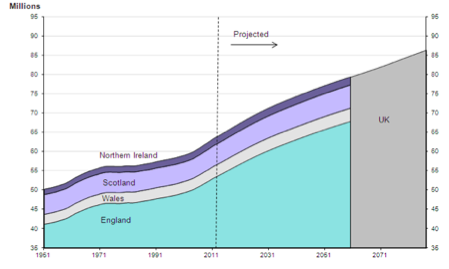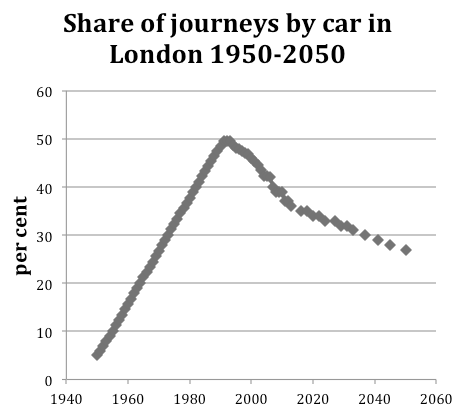Transport accounts for over 60 per cent of global oil consumption and about a quarter of energy-related carbon emissions. Typical forecasts of future world vehicle ownership project substantial increases, particularly in the developing economies. The transport sector relies largely on oil for motive power and has been seen as more problematic than other parts of the economy when it comes to reducing greenhouse gas emissions.
The problem of transport greenhouse gases may be less than generally supposed, however. There is emerging evidence that individual car use, as measured by the average annual distance travelled, has ceased to grow in most of the developed economies, starting well before the recent recession, and it may be declining in some countries – a phenomenon known as ‘Peak Car’. A number of explanations have been proposed, which are not mutually exclusive and include a decline in younger people holding drivers licences, changes to company car taxation, saturation of demand for daily travel, technological constraints on faster travel, and a shift away from car use in urban areas.
London
The shift away from car use in cities is particularly important in a world in which future population growth will be mainly urban and the economic attractions of population density are increasingly recognised – agglomeration economics. London illustrates these developments. Over the past twenty years the population has been growing and incomes rising, but car use has held steady at about 10m trips a day. This is mainly because the city has not increased road capacity but instead has invested in public transport, particularly rail which offers speedy and reliable travel for work journeys, compared with the car on congested roads.
A growing population but no growth of car use has resulted in a marked decline in the share of journeys by car in London, from 50 per cent of all trips in 1990 to 37 per cent currently. With continued population growth projected and more investment in rail planned, the share of trips by car could fall to 27 per cent by mid-century. There is every reason to suppose that London will continue to thrive as car use declines – perhaps because car use declines.
This decline in car use from 1990 was preceded by a 40 year period of growth from 1950, the result of growing incomes, growing car ownership and at the same time a falling population as people left an overcrowded damaged city for new towns, garden cities and greener surroundings. So we see a marked peak on car use around 1990, the time when the population of London was at a minimum, when attitudes to city living began to changes.
Peak Car in the Big City
This phenomenon of ‘Peak Car in the Big City’ is not unique to London although this is the city for which we have the best data. There is evidence for something similar happening in Birmingham, Manchester and other British cities as well as those in other developed countries. The shift in economies from manufacturing to services is an important driver, as is the growth of higher education located in city centres, attracting young people for whom the car is not part of the life style.
The Peak Car phenomenon is helpful for mitigating transport greenhouse gas emissions – both the cessation of per capita car use nationally and the decline in the share of trips by car in cities. I have estimated that these changes in behavior, taken together with expected developments on low- and zero-emission technologies, could reduce UK surface transport greenhouse gas emissions in 2050 by 60 per cent compared with a 1990 baseline. This fall short of the overall target of 80 per cent reduction, but is a good deal better than conventional projections.
Peak Car is not just an emerging phenomenon to be investigated. It is a helpful trend to be encouraged to achieve both successful, sustainable cities and national reduction of transport greenhouse gas emissions.
This article is based on a recent paper of mine published in the journal Case Studies on Transport Policy, also available as a final draft Metz CaseStudies 1-5-15 pdf.


